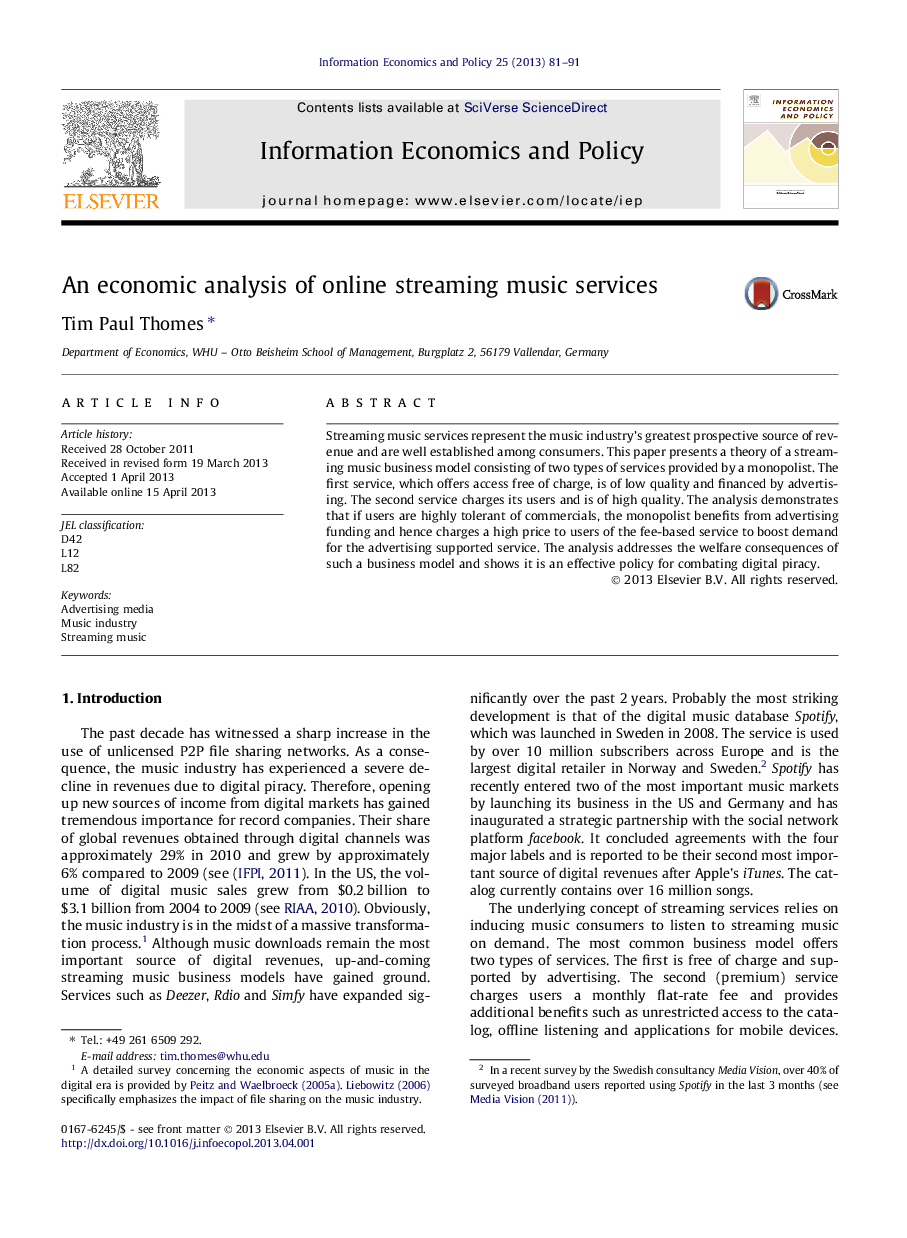| Article ID | Journal | Published Year | Pages | File Type |
|---|---|---|---|---|
| 5075905 | Information Economics and Policy | 2013 | 11 Pages |
Abstract
Streaming music services represent the music industry's greatest prospective source of revenue and are well established among consumers. This paper presents a theory of a streaming music business model consisting of two types of services provided by a monopolist. The first service, which offers access free of charge, is of low quality and financed by advertising. The second service charges its users and is of high quality. The analysis demonstrates that if users are highly tolerant of commercials, the monopolist benefits from advertising funding and hence charges a high price to users of the fee-based service to boost demand for the advertising supported service. The analysis addresses the welfare consequences of such a business model and shows it is an effective policy for combating digital piracy.
Keywords
Related Topics
Social Sciences and Humanities
Business, Management and Accounting
Management of Technology and Innovation
Authors
Tim Paul Thomes,
